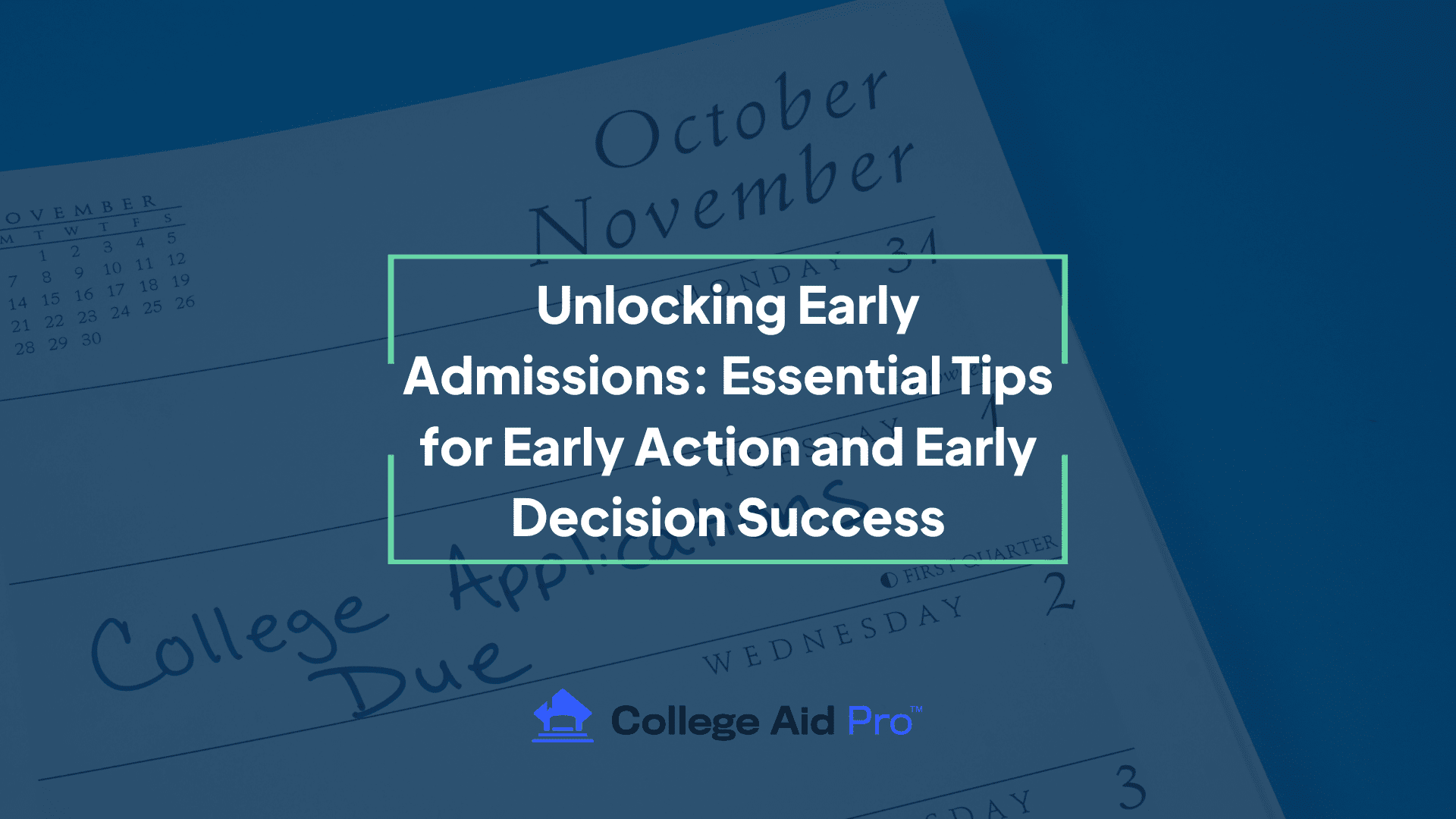The journey to college can be both exciting and overwhelming, and understanding the timelines for early action (EA) and early decision (ED) can significantly impact the application process. In this comprehensive guide, we’ll explain the nuanced EA and ED application process. Our goal is to offer insights and advice that will empower aspiring college students through this important phase of their academic adventure.
The Basics of Early Action and Early Decision
Before diving into the timelines, let’s establish a clear understanding of what early action and early decision applications are.
Early Action (EA): EA is a non-binding application process that allows students to submit their applications ahead of regular deadlines. The advantage? Admissions decisions typically arrive by December. This gives students and their families more time to weigh the pros and cons for each school before a final decision is made. In addition, students are not obligated to enroll if accepted and can consider other offers.
Early Decision (ED): Unlike Early Action, ED is a binding commitment. If you submit an early decision application, the student, parent and high school counselor are typically required to sign an agreement verifying the commitment if you are accepted.
You can only apply early decision to one college, but you can submit early action, rolling, and regular decision applications concurrently to other schools. If you are accepted through early decision you must pull all other college applications you’ve submitted. Due to its binding nature, ED is a significant decision that requires careful consideration.
Early Action Timeline
Understanding the timeline for early action is crucial for prospective college students. The following is a detailed breakdown of key milestones:
Spring of Junior Year (11th Grade):
– Begin researching colleges and identifying potential early action candidates.
– Consider taking standardized tests (SAT/ACT) in the spring, allowing time for potential retakes.
– Initiate communication with teachers for letters of recommendation.
Summer Before Senior Year:
– Finalize the list of colleges for early action applications.
– Create a master calendar with all application deadlines.
– Begin drafting personal statements and essays.
Early Fall of Senior Year:
– Register for standardized tests if not completed in junior year.
– Finalize letters of recommendation with teachers.
– Complete and submit applications well before the early action deadline.
– Begin working on regular decision applications as a backup.
Late Fall of Senior Year:
– Confirm that all application materials, including transcripts and test scores, are submitted.
– Prepare for potential interviews if required by the colleges.
– Stay focused on academics and maintain a strong academic record.
December:
– Receive early action decisions.
– Evaluate offers and compare financial aid packages.
– Decide whether to proceed with regular decision applications or commit to an early action offer.
Early Decision Timeline
The timeline for early decision is more condensed due to the binding nature of the process:
Spring of Junior Year (11th Grade):
– Begin researching colleges and identifying potential early decision candidates.
– Consider taking standardized tests (SAT/ACT) in the spring, allowing time for potential retakes.
– Initiate communication with teachers for letters of recommendation.
Summer Before Senior Year:
– Finalize the list of colleges for early decision applications.
– Create a master calendar with all application deadlines.
– Begin drafting personal statements and essays.
Early Fall of Senior Year:
– Register for standardized tests if not completed in junior year.
– Finalize letters of recommendation with teachers.
– Complete and submit early decision applications well before the November deadline.
– Begin working on regular decision applications as a backup.
Late Fall of Senior Year:
– Confirm that all application materials, including transcripts and test scores, are submitted.
– Prepare for potential interviews if required by the colleges.
– Stay focused on academics and maintain a strong academic record.
December:
– Receive early decision decisions.
– If admitted, celebrate and withdraw all other college applications.
– Begin preparations for enrollment, including housing and financial aid.
7 Tips for a Successful Early Action and Early Decision Process
- Plan Ahead: Early planning is key. Start researching colleges and identifying potential options in junior year.
- Stay Organized: Create a master calendar with all application deadlines, requirements, and important dates.
- Seek Guidance: Consult with teachers, counselors, and mentors for advice on college choices and application strategies.
- Prepare for Standardized Tests: Take standardized tests seriously and consider early preparation to allow for potential retakes.
- Craft Compelling Essays: Spend time perfecting personal statements and essays that showcase your personality and achievements.
- Maintain Academic Excellence: Colleges consider senior-year grades, so continue to excel academically throughout the application process.
- Stay Informed: Keep abreast of any updates or changes in the application process for your chosen colleges.
Navigating the early action and early decision timeline requires careful planning, dedication, and a clear understanding of the application process. By following this comprehensive guide and incorporating the provided tips, aspiring college students can approach the application season with confidence, increasing their chances of securing admission to their dream institutions.
Remember, the journey to college is not just about getting in; it’s about finding the right fit for your academic and personal growth. Good luck!



